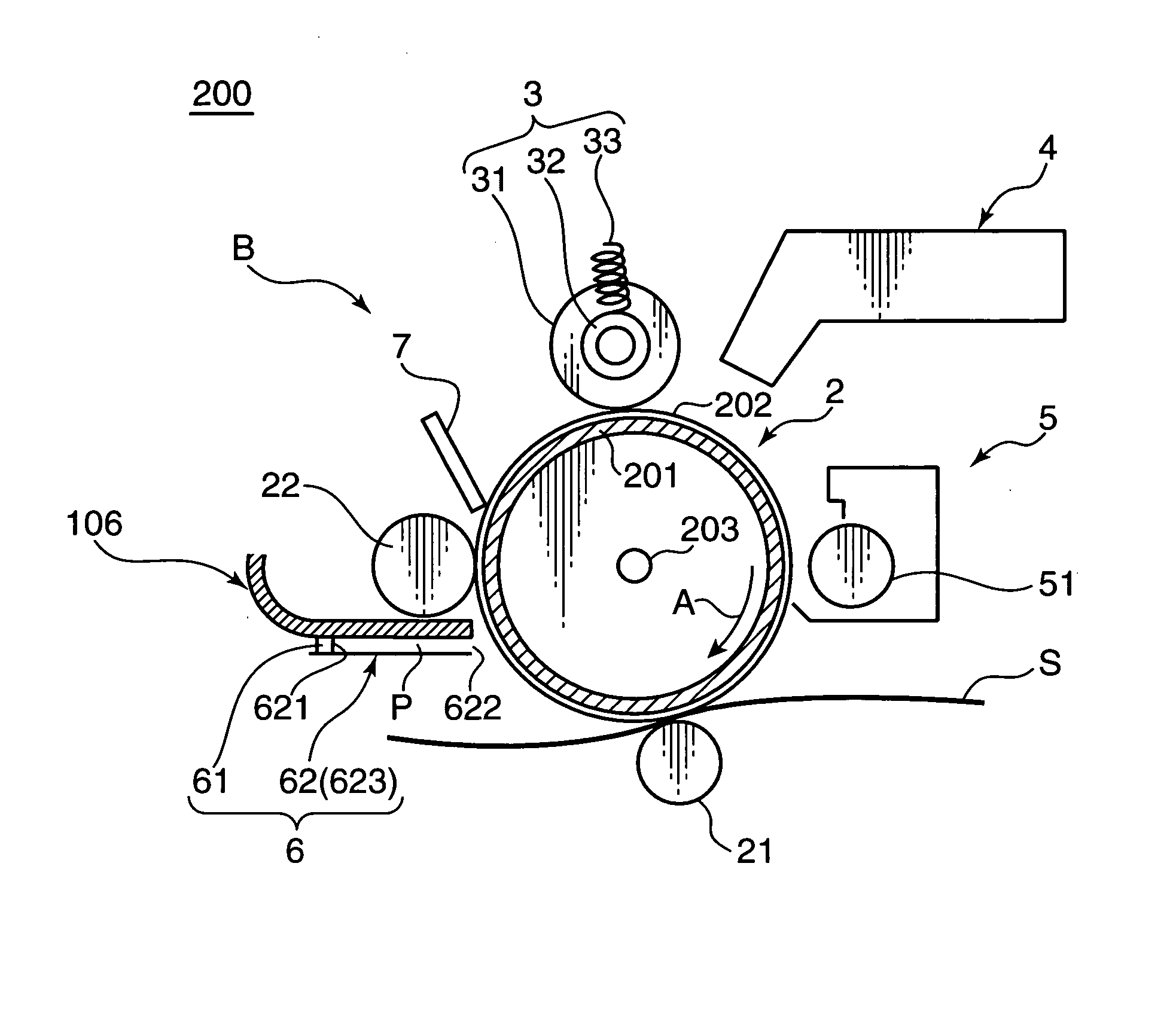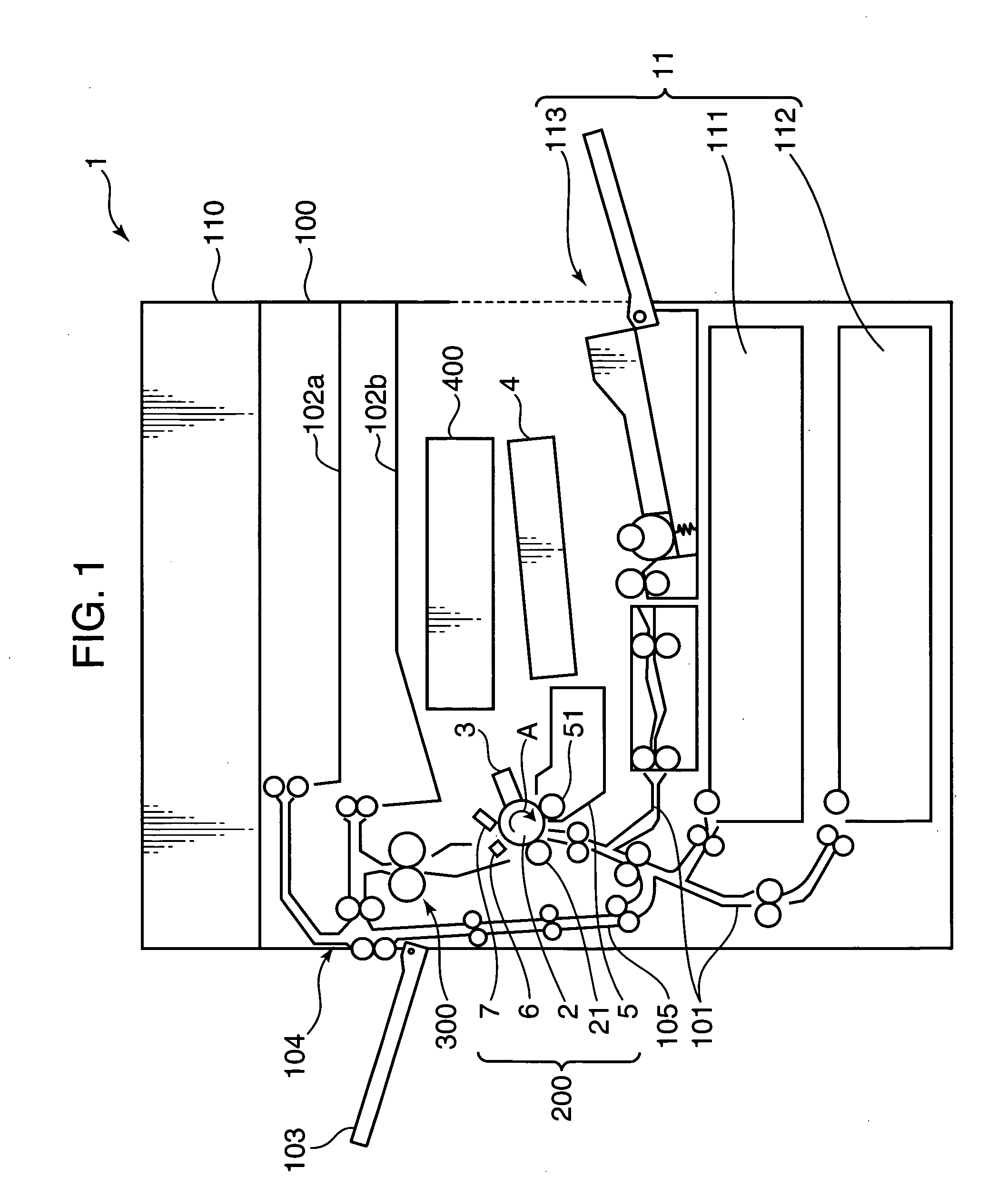Image forming apparatus
a technology charging roller, which is applied in the field of image forming apparatus, can solve the problems of image formation failure, low charging potential, and large nip distance difference between the charging roller and the photosensitive drum, and achieve the effect of preventing the occurrence of image formation failur
- Summary
- Abstract
- Description
- Claims
- Application Information
AI Technical Summary
Benefits of technology
Problems solved by technology
Method used
Image
Examples
first embodiment
[0055] The above arrangement is employed in the first embodiment for the following reason. As shown in FIG. 4, in the image forming apparatus provided with the contact charging type charging roller 31 or the like, in order to bring the charging roller 31 into pressing contact with the photosensitive drum 2, it is required to provide the pressure springs 33 for urging the bearings 32 at the opposite ends of the charging roller 31 in view of likelihood that a sufficient pressing force may not be secured for the roller main body. Providing urging members such as the pressure springs 33, however, may result in a smaller load to be exerted to the axially central part of the photosensitive drum 2, as compared with the axially opposite ends thereof. As a result, the nip width between the photosensitive drum 2 and the charging roller 31 may be narrow on an axially central part C1, as compared with axially opposite ends C2. This may lower the surface potential i.e. the charging potential on ...
second embodiment
[0067] In the charge removing unit 6A in the second embodiment, a surface of a frame member 106, which is a component for defining a slit-like light transmitting space P of the light guiding member 62A, facing the light transmitting space P, has a substantially uniform reflectance to the charge removing light. On the other hand, a surface of an optical path defining member 623A facing the light transmitting space P has a locally varied reflectance to the charge removing light in order to vary the amount of the chare removing light to be projected onto the surface of the photosensitive drum 2 in the axial direction of the photosensitive drum 2.
[0068] As shown in FIG. 9, the optical path defining member 623A is produced by placing a first reflective member 6231 having a relatively low reflectance e.g. 50% or less in reflectance to the charge removing light, as a base member, and by attaching, on the base member, a second reflective member 6232 having a relatively high reflectance e.g....
third embodiment
[0084] The third embodiment is constructed as mentioned above for the following reason. As shown in FIGS. 3 and 11, in the case where the LED array 61 is used as a light source, wherein the LEDs 612, serving as point light sources, are arrayed in the axial direction of the photosensitive drum 2, the amount of the charge removing light to be projected along the second shortest lines L21, L22, . . . connecting the midpoints P1, P2, . . . of the adjacent LEDs 612 and the surface of the photosensitive drum 2 is made smaller than the amount of the charge removing light to be projected along the first shortest lines L11, L12, L13, . . . connecting the respective LEDs 612 and the surface of the photosensitive drum 2, because the second distance d4 is longer than the first distance d3. The lowering of the charge removing light amount is increased by increasing the interval between the respective LEDs 612. In other words, if the number of the LEDs 612 is decreased in order to reduce the prod...
PUM
 Login to View More
Login to View More Abstract
Description
Claims
Application Information
 Login to View More
Login to View More - R&D
- Intellectual Property
- Life Sciences
- Materials
- Tech Scout
- Unparalleled Data Quality
- Higher Quality Content
- 60% Fewer Hallucinations
Browse by: Latest US Patents, China's latest patents, Technical Efficacy Thesaurus, Application Domain, Technology Topic, Popular Technical Reports.
© 2025 PatSnap. All rights reserved.Legal|Privacy policy|Modern Slavery Act Transparency Statement|Sitemap|About US| Contact US: help@patsnap.com



